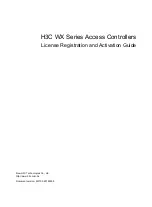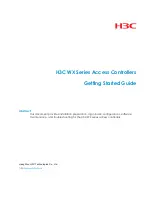
S6E2CC/C5/C4/C3/C2/C1 Series Flash Programming Specification, Document Number: 002-04913 Rev. *D
25
−
Because ECC bits are added in this series, writes are always required to be performed in units of 32 bits by using
two 16-bit writes. See Section "
1.3.4 Writing to MainFlash Memory in Products Equipped with ECC
" for details on
the procedure.
−
You cannot rewrite to the address once you wrote to because the ECC (Error Correction Code) has been changed.
To perform rewriting to the same address, erase the address (sector erase or flash erase) in advance.
1.3.3.3 Flash Erase Operation
This section explains the flash erase operation.
All sectors in target flash macro can be erased in one batch. Erasing all of the sectors in one batch is called flash erase.
The automatic algorithm can be activated and all of the sectors in flash macro including target sector can be erased in one
batch by sending the flash erase command sequentially to the target sector.
See Section "
" for details on the flash erase command.
1. Issue the flash erase command sequentially to the target sector
The automatic algorithm is activated and the flash erase operation of the flash memory begins.
2. Perform read access to an arbitrary address
The data that is read is the hardware sequence flag. Therefore, if the value of bit7 (the DPOL bit) of the data that was read
is "1", that means t the flash erase has finished.
The time required to erase the flash is "sector erase time
total number of s flash write time (preprogramming)".
Once the flash erase operation has finished, the flash memory returns to read/reset mode.
1.3.3.4 Sector Erase Operation
This section explains the sector erase operation.
Sectors in the flash memory can be selected and the data of only the selected sectors can be erased. Multiple sectors can
be specified at the same time.
Sectors are erased according to the following sequence.
1. Issue the sector erase command sequentially to the target sector
Once 35μs has elapsed (the timeout interval), the automatic algorithm activates and the sector erase operation begins.
To erase multiple sectors, issue the erase code (0x30) to an address in the sector to erase within 35μs (the timeout
interval). If the code is issued after the timeout interval has elapsed, the added sector erase code may be invalid.
2. Perform read access to an arbitrary address
The data that is read is the hardware sequence flags. Therefore, if the value of bit7 (the DPOL bit) of the data that was
read is "1", that means the sector erase has finished.
Furthermore, it can be checked whether or not the sector erase has finished by using the TOGG bit.
an example of the sector erase procedure for the case of using the TOGG bit for confirmation.
















































